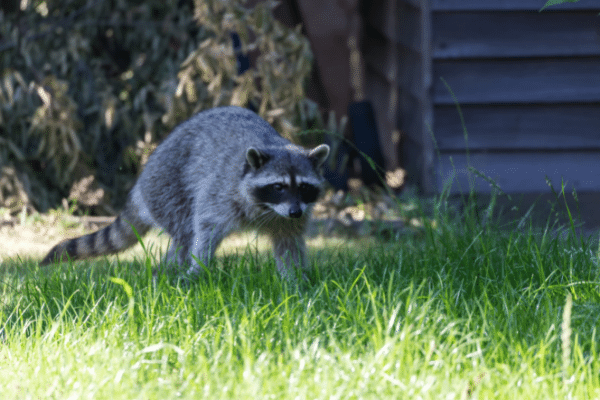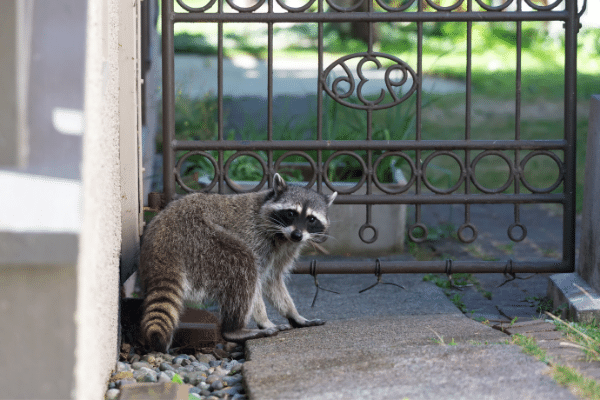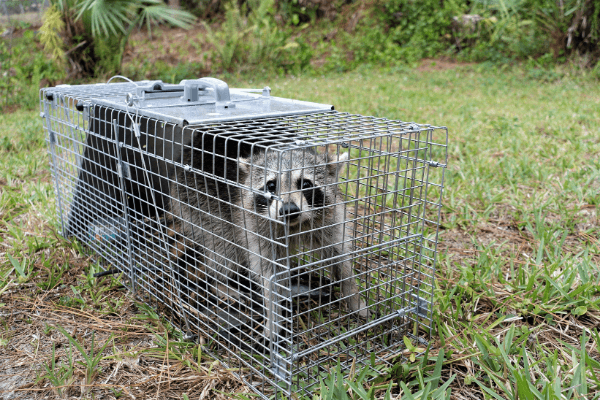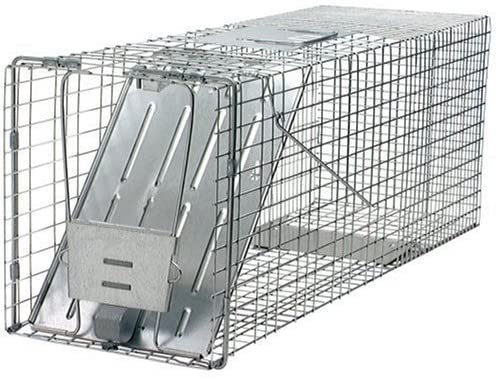- Home
- Raccoon Trapping
- Raccoon Removal
Raccoon Removal
This post may contain affiliate links so I earn a commission.
Raccoon removal from an attic or chimney is a problem many homeowners face.
Many of us have been there, the scratching and growling you hear in the ceiling, or the sight of a raccoon crawling around on your roof is enough to make anyone want immediate results.
However, is getting rid of a raccoon that's living in your attic or chimney a do-it-yourself project you can tackle on your own, or should you call a local professional?

If you're like me, saving a few dollars always sounds appealing, but sometimes it's better to just pay a professional to handle the problem for you.
Before you decide whether or not you should attempt to trap the raccoon yourself, it's important to understand why the raccoon, or in most cases raccoons, are living in your attic or chimney to begin with.
Raccoon Removal In Your Attic
Raccoons typically enter an attic for one specific reason.
A mother is searching for a warm, dry den to have her babies and raise her young.
An attic provides the ideal location for a mother raccoon who is looking for a safe and secure spot to give birth.
Raccoon babies, called kits, are usually born in the early spring between March and April.
Occasionally, if the first litter does not survive, a second litter can be come as late as June.
They generally enter your attic though a small hole (as little as 4 inches) in your soffit.
Once inside they feel secure and they're not in any hurry to leave.
One common problem homeowners make is attempting to trap the adult raccoon and seal off the entry point in your soffit.
While trapping the adult raccoon will resolve that specific problem, most homeowners fail to realize there are several babies still tucked away in a secluded part of your attic.

Unfortunately, unless these babies are removed they will eventually die leaving behind a horrific smell and unwanted mess.
Proper raccoon removal from an attic involves trapping the mother and removing the young.
Doing this requires effectively trapping the mother in a live trap then returning to your attic and finding the young.
Searching for a litter of young raccoons in an attic is not an easy task.
They will be hidden out of sight and tucked away in a corner surrounded by insulation.
Raccoon Removal From Your Chimney
A mother raccoon will enter a chimney for the same reason she enters your attic….to give birth.
Many homeowners think a raccoon is simply stuck inside their chimney and if they light a fire in the fireplace it will smoke it out and that will take care of the problem.
Raccoons are tremendous climbers and it's highly unlikely the animal entered your chimney by mistake.
Attempting to smoke them out might cause the adult raccoon to leave, but the babies will be left behind to die.
The Best Way To Remove Unwanted Raccoons
Hiring a professional to remove a family of unwanted raccoons from your attic or chimney is the best solution.
As a do-it-yourself person I understand not wanting to pay someone to trap a nuisance raccoon, however the money is well spent.

Professional and reputable companies have specialized equipment and knowledge to safely and humanely remove a family of unwanted raccoons from your home.
A mother raccoon is extremely protective of her young.
They can become very aggressive and won't hesitate to attack.
Also, raccoon feces can contain Raccoon Roundworm which is harmful to humans if it's inhaled.
Professionals often wear specialized clothing and breathing equipment to prevent sickness, something an average homeowner will not have.
Raccoon Removal - Protecting Your Trash
Normally, you won't have raccoons getting into your trash in the middle of winter.
It's usually during the hot summer months when your trash stinks and a hungry raccoon is looking for an easy meal.
If you're dealing with a raccoon tipping over your trashcan in the mid to late summer, the easiest way to get rid of them is to set a live trap.
This is one example where you can easily trap the raccoon yourself and not pay someone to do it for you.

Since it's later in the summer and you don't have to worry about leaving a nest full of young behind, simply set a live animal trap baited with marshmallows, a whole egg, or even a rolled up ball of tinfoil dangling from a string, and you'll typically catch the raccoon in the first night.
I like to use marshmallows, a whole egg or tinfoil to trap a raccoon because it reduces the possibility of catching a non targeted animal like a cat or opossum.
To learn more about choosing the best bait, check out this articles which explains the best raccoon bait to use in a live trap.
Overall
Raccoon removal from an attic or chimney is a reality that many people will eventually face.
Since raccoons are not shy creatures, they're not afraid of people and they won't hesitate to enter your home.
Although I'm a huge advocate for saving money and doing many things yourself, this job is best left to the professionals.



